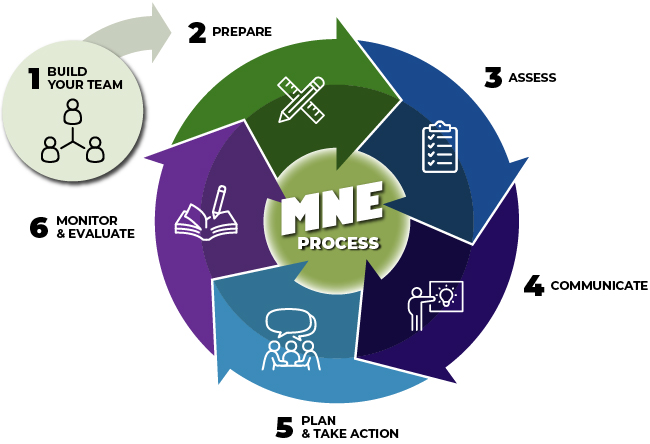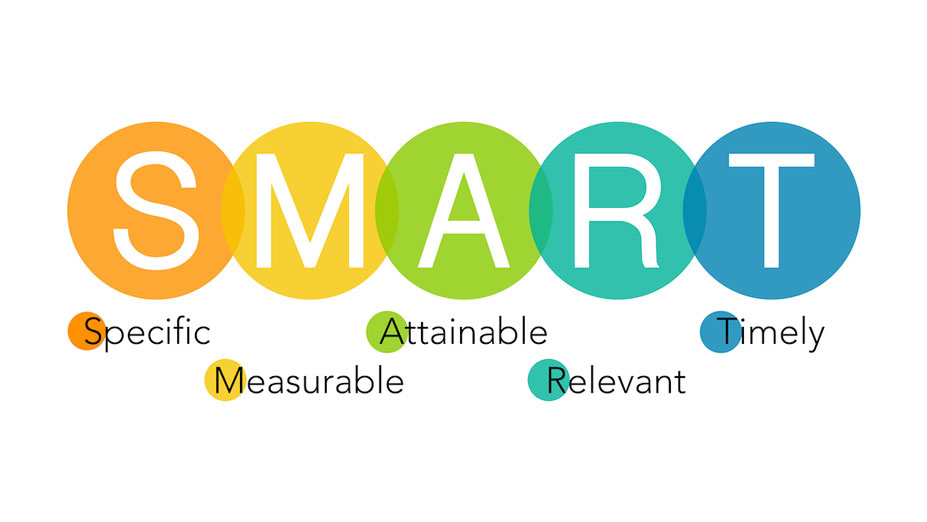Congratulations on starting the process to assess and improve your local food environment! Follow the steps below to begin your team’s journey towards a more supportive environment for members of your local military community. Keep in mind that the process timeline differs for each team. Also, your team might need to go back and repeat or review steps to optimize your success.
Military Nutrition Environment

Build your team
Assembling your team is the first step to assess your local installation or ship’s military nutrition environment (MNE). Often, a health promotion educator or registered dietitian leads the team, but it’s helpful to include a diverse team of stakeholders to optimize support, resources, and collaboration.
Prepare for assessments
Once you build your team, review the Military Nutrition Environment Assessment Tool (mNEAT) app’s in-person worksheets to become familiar with each venue’s evaluation questions. This can help facilitate the assessment process and ensure team success. Next, work to prepare your team to conduct assessments across your installation.
- Make a list of all the food venues on your installation or ship, and categorize them by venue type (for example, MWR, fast food, food truck, express, etc.). You don’t need to assess every venue, but this list will help you see the total number and types of venues at your location.
- Use the list to target which venues to assess based on your team’s timeline, resources, and military setting and size.
- Assess at least one venue per type (preferably the most popular or high-volume venues) in addition to following Service-specific guidance.
- Assign venue assessments to each team member or group and a deadline for when to complete them.
- If feasible, contact venues ahead of time to coordinate a meeting with the manager, so you can review the assessment questions. Explain that the mNEAT app is used to understand the local installation or ship’s food environment, but it isn’t an inspection. Answer any questions they might have and let them know you’ll share the results.
Note: If it’s hard to conduct a full assessment all at once, break it up over the course of a few months. Follow Service-specific guidance for completion requirements and deadlines.
Assess the local nutrition environment
Make sure you’re fully prepared to conduct an assessment.
- Print in-person worksheets for each venue or use the mNEAT app to complete the assessments.
- Once you arrive at the venue, introduce yourself to the manager and state your purpose.
- While completing each assessment, note any observations in the app (in the “Additional Observations” field) or on the worksheet (such as the time of day you assessed the venue, whether the venue was busy, etc.).
- Take pictures for later reference (if possible).
- Use the mNEAT Observation Record to help organize your thoughts and observations.
After you conduct the assessment:
- Review the data you entered (in “Existing Assessments”) and return to the venue (if needed) to get any missing data.
- If you used in-person worksheets, enter the data (including your observations) in the mNEAT app.
For best practices and other helpful strategies, read HPRC’s article on how to assess your nutrition environment.
Communicate results
Communicating results is just as critical to awareness and change as conducting the assessment.
Coordinate a time with the food service venue manager to review their assessment results.
- Discuss what their scores mean and highlight areas that are doing well or show improvement. For any low-scoring areas, emphasize this is an opportunity to develop an action plan for future success. Remind stakeholders that the scores are aspirational.
- Explain that you’ll also make the results available to your leadership.
Share the overall scores with your installation or ship’s leadership.
- Recognize your team members, including the food service venue managers and operators.
- Explain the total number of venues on the installation or ship and the actual number your team assessed.
- Emphasize any positive strategies venues are using to enhance their food policy, food availability, and/or behavioral design.
- Describe opportunities for improvement in lower scoring areas and propose next steps.
- Make note of any improvements from the prior assessment and interest from food service operators to collaborate on MNE improvements.
Plan and implement an action plan
Meet with your team to develop an action plan to improve an aspect of your local MNE. The key to designing and implementing an effective nutrition environment action plan is stakeholders’ buy-in and support.
- Work with stakeholders to develop your action plan and prioritize the focus area (food policy, food availability, behavioral design).
- As you build your action plan, collaborate with your leadership to set goals.
- Develop doable short-, mid-, and long-range objectives and specific, measurable, attainable, relevant, and timely (SMART) goals to guide your plan.
- Track your action plan development and implementation. The mNEAT Facilitator’s Guide (Appendix D) has a sample action planning template that can help.
- If you need ideas or don’t know where to start, read more about how to develop and implement an action plan. And remember to keep your installation or ship's leadership informed throughout the process.
Monitor and evaluate your action plan
Schedule an annual assessment on your military installation or ship to capture food environment improvements year-to-year and highlight initiatives to help Service Members perform their best. Annual assessments also help you maintain rapport with stakeholders and leadership.
- When you reassess your installation or ship, determine which aspects of your action plan worked best and where you had challenges.
- After reviewing your score, use your team’s best practices and experiences to modify your current action plan or develop your next one.
- Evaluate if you need to adjust your MNE team due to team members’ job duties, PCS, etc. Consider if you should add additional stakeholders to your team.
![]() If you have a best practice or success story you’d like to share, send it to the CHAMP MNE team at mNEAT@usuhs.edu or complete the online form. We’ll feature your story or action plan on our website, so others can learn from your success!
If you have a best practice or success story you’d like to share, send it to the CHAMP MNE team at mNEAT@usuhs.edu or complete the online form. We’ll feature your story or action plan on our website, so others can learn from your success!


